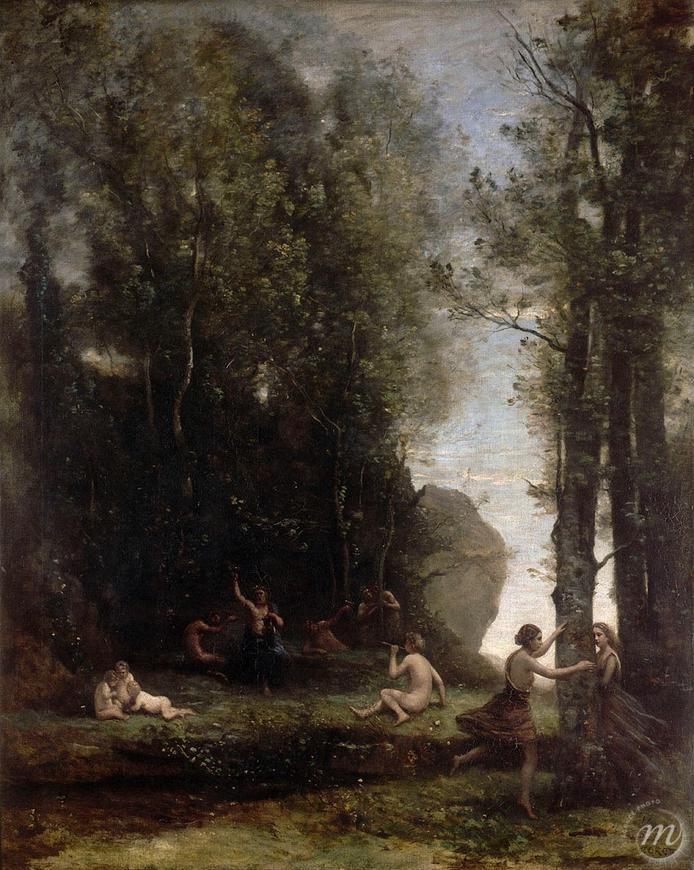In the 1850s, Corot was part of the Peasant's Revolt. He successfully combined the classical ideal with the observation of nature. He was one of the first to paint natural landscapes "sur le motif" – from nature. However, it is obvious at first glance that there is nothing realistic about this landscape, as it features nymphs inspired by Antiquity. The theme is directly inspired by the bacchanalia, feasts celebrated in honour of Bacchus, the Roman god of wine and drunkenness.
With light, vaporous brushwork and subtle lighting in the foliage or on the delicate skin of the young girls, Corot's style seems to herald the birth of Impressionism. However, although some artists in the mid-19th century sought to reinvent painting techniques and take their inspiration from the everyday, Corot preferred to invent a dreamlike and timeless universe, detached from any context. Bucolic nudes, idyllic landscapes and nymphs populate his world. Corot's work is closer to the symbolist sensibility than that of the Impressionists. He feared overly radical upheavals, and therefore avoided trends.
During the work's presentation at the 1859 Salon, writer Alexandre Dumas declared: "Corot is a poet […]; only he writes with a brush".
Detail 1 : The palette of colours is deliberately reduced, as the blue of the sky and the pale pink shade of the bodies harmonise with the green and brown of the vegetation.
Detail 2 : The space occupied by the figures is also reduced. The human presence is anecdotal compared to the landscape's majesty.

In the 1850s, Corot was part of the Peasant's Revolt. He successfully combined the classical ideal with the observation of nature. He was one of the first to paint natural landscapes "sur le motif" – from nature. However, it is obvious at first glance that there is nothing realistic about this landscape, as it features nymphs inspired by Antiquity. The theme is directly inspired by the bacchanalia, feasts celebrated in honour of Bacchus, the Roman god of wine and drunkenness.
With light, vaporous brushwork and subtle lighting in the foliage or on the delicate skin of the young girls, Corot's style seems to herald the birth of Impressionism. However, although some artists in the mid-19th century sought to reinvent painting techniques and take their inspiration from the everyday, Corot preferred to invent a dreamlike and timeless universe, detached from any context. Bucolic nudes, idyllic landscapes and nymphs populate his world. Corot's work is closer to the symbolist sensibility than that of the Impressionists. He feared overly radical upheavals, and therefore avoided trends.
During the work's presentation at the 1859 Salon, writer Alexandre Dumas declared: "Corot is a poet […]; only he writes with a brush".
Detail 1 : The palette of colours is deliberately reduced, as the blue of the sky and the pale pink shade of the bodies harmonise with the green and brown of the vegetation.
Detail 2 : The space occupied by the figures is also reduced. The human presence is anecdotal compared to the landscape's majesty.